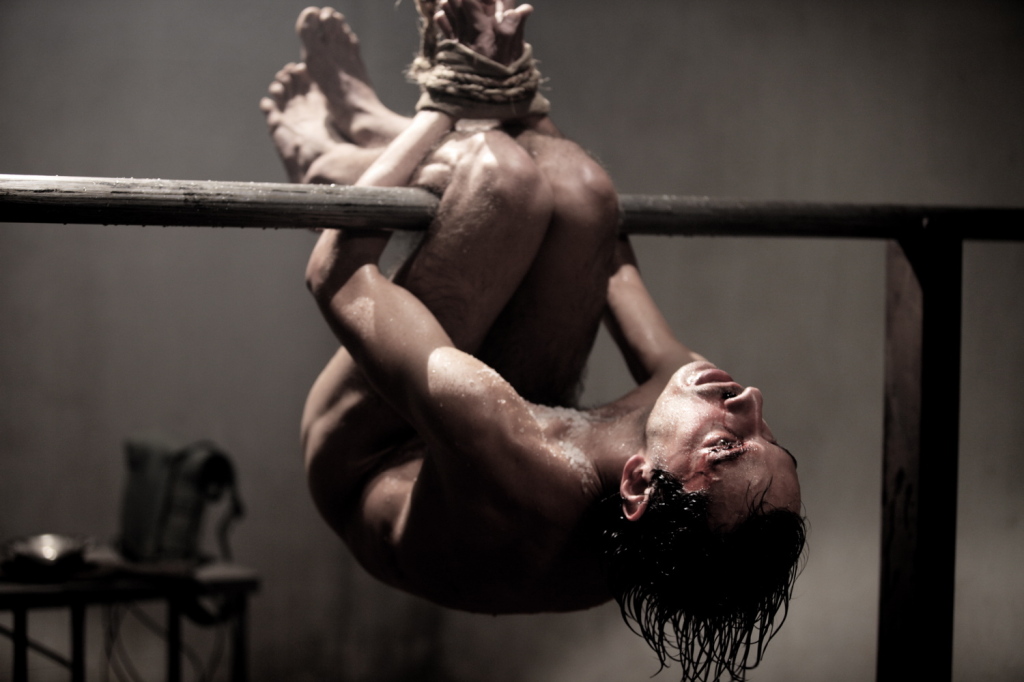Torture Report: CIA Interrogations Chief Was Involved in Latin American Torture Camps
LATIN AMERICA AND THE CARIBBEAN, 15 Dec 2014
Senior agent in torture programme was recommended for censure decades earlier for “inappropriate use of interrogation techniques”.
11 Dec 2014 – The CIA officer tasked with interrogating the most important prisoners in America’s secret detention programme allegedly abused captives during the agency’s covert operations in Latin America in the 1980s, it has emerged.
The US Senate’s three-year inquiry into the CIA’s use of torture after September 11 reveals that a senior agent involved in the programme was recommended for censure decades earlier for “inappropriate use of interrogation techniques”.
The unnamed officer was appointed to head the CIA’s “high value detainee” team in autumn 2002, shortly after the agency began waterboarding a prisoner at secret detention centre in Afghanistan.
Human rights groups said that the agent’s promotion despite his track record of abusing prisoners was evidence that that the CIA did not hold its officers accountable for torture.
“We should all be afraid that many of these agents are still at the CIA and used in the same sorts of operations when they have already shown they cannot be trusted,” said Katherine Hawkins of OpenTheGovernment.org, a pro-transparency group.
According to the 480-page report, the CIA had engaged in torture during the Cold War, when Soviet defector Yuri Nosenko was detained for three years and subjected to the sensory deprivation and forced standing techniques that would later be used against al-Qaeda detainees.
During testimony to Congress in 1978 one former officer charged with investigating Nosenko’s torture described his treatment as an “abomination”.
The techniques used against Nosenko were taken from the CIA’s “KUBARK Counterintelligence Interrogation Manual” drawn up by the CIA in 1963, which served as the basis of the so-called ‘torture manuals’ that were provided by the CIA to at least seven Latin American countries in the 1980s.

The ‘pau-de-arara’ was a preferred form of torture in Brazil, introduced by the CIA in the 60/70’s Operation Condor. Electric shocks were applied to limbs, genitals, anus. Cigarettes butts put out in body, beatings to unconsciousness.
According to the report, the agent who would become the CIA’s chief of interrogations beginning in 2002 “was involved in training and conducted interrogations” in Latin America during that era. The report goes on to say that “the CIA inspector general later recommended that he be orally admonished for inappropriate use of interrogation techniques.”
 Additionally, the report claims that in 2005 senior CIA officers, including Jose Rodriguez who ran the entire interrogation programme, objected to a proposal that the CIA should actively “vet and review” the records of interrogating officers in order to give itself better legal protection.
Additionally, the report claims that in 2005 senior CIA officers, including Jose Rodriguez who ran the entire interrogation programme, objected to a proposal that the CIA should actively “vet and review” the records of interrogating officers in order to give itself better legal protection.
The proposal suggested that the “unusual measures” – ie enhanced interrogation techniques – could be considered “lawful only when practised correctly by personnel whose records clearly demonstrate their suitability for that role.”
Despite this, the report found that “numerous CIA interrogators and other CIA personnel…had either suspected or documented personal and professional problems that raised questions about their judgement and CIA employment.
“This group of officers included individuals who, among other issues, had engaged in inappropriate detainee interrogations, had workplace anger management issues, and had reportedly admitted to sexual assault.”
In a heavily redacted footnote to the report, the Committee noted “that among the abuses [officer name deleted] had engaged in ‘Russian Roulette’ with a detainee” according to a 1984 internal memo to the CIA Inspector General.
The report is too heavily redacted to determine whether this is the same officer who was selected to head the interrogation programme in 2002.
Among the many objections by civil rights groups is that the CIA demand for heavy redactions to the report was intended not to protect officers’ lives in the field but to obscure the fact that many CIA officers involved in torture have remained at the agency and been promoted.
Go to Original – telegraph.co.uk
DISCLAIMER: The statements, views and opinions expressed in pieces republished here are solely those of the authors and do not necessarily represent those of TMS. In accordance with title 17 U.S.C. section 107, this material is distributed without profit to those who have expressed a prior interest in receiving the included information for research and educational purposes. TMS has no affiliation whatsoever with the originator of this article nor is TMS endorsed or sponsored by the originator. “GO TO ORIGINAL” links are provided as a convenience to our readers and allow for verification of authenticity. However, as originating pages are often updated by their originating host sites, the versions posted may not match the versions our readers view when clicking the “GO TO ORIGINAL” links. This site contains copyrighted material the use of which has not always been specifically authorized by the copyright owner. We are making such material available in our efforts to advance understanding of environmental, political, human rights, economic, democracy, scientific, and social justice issues, etc. We believe this constitutes a ‘fair use’ of any such copyrighted material as provided for in section 107 of the US Copyright Law. In accordance with Title 17 U.S.C. Section 107, the material on this site is distributed without profit to those who have expressed a prior interest in receiving the included information for research and educational purposes. For more information go to: http://www.law.cornell.edu/uscode/17/107.shtml. If you wish to use copyrighted material from this site for purposes of your own that go beyond ‘fair use’, you must obtain permission from the copyright owner.
Read more
Click here to go to the current weekly digest or pick another article:
LATIN AMERICA AND THE CARIBBEAN: